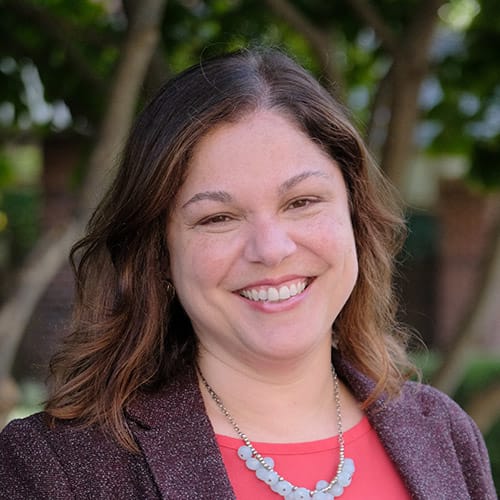
COPD: Early Signs, Causes, and Treatment

Chronic obstructive pulmonary disease, or COPD, is an inflammatory disease that limits airflow to the lungs. Older adults, especially women, are at increased risk for this common, often preventable disease.
Let our care assessment guide you
Our free tool provides options, advice, and next steps based on your unique situation.
COPD is progressive, meaning it gets worse over time. But is COPD fatal? In fact, COPD is the fourth leading cause of death in the U.S., killing more than 120,000 people each year.
About 16 million people have COPD, according to the National Heart, Lung, and Blood Institute. Yet many people with COPD aren’t aware they have it.
Read on to learn what causes COPD, who’s at risk for it, how to identify early signs of COPD, and how it’s treated.
What causes COPD?
Cigarette smoking is a key factor in the development and progression of COPD. Pipe, cigar, and other forms of tobacco smoke — as well as secondhand smoking — can also cause COPD. Other factors that contribute to COPD include respiratory infections, genetic conditions, and exposure to air pollutants like chemical fumes or dusts.
Emphysema and chronic bronchitis are the two most common conditions that contribute to COPD. These conditions usually occur together in people with COPD. They cause chronic inflammation, narrowing of the airways, and damage to the alveoli, which are small air sacs in the lungs where the exchange of oxygen and carbon dioxide takes place.
Who’s at risk for COPD?
Risk factors for COPD include:
- Smoking. Up to 75% of people who have COPD smoke or used to smoke tobacco products.
- Family history. People with parents who’ve had COPD are more likely to develop it.
- Exposure to lung irritants — such as air pollution, chemical fumes or dusts, and secondhand smoke — can contribute to COPD.
- Asthma. Even mild to moderate asthma increases an individual’s risk of COPD. However, adequate management of asthma can help reduce inflammation in the airways, lowering the risk of COPD.
- Tuberculosis and other respiratory infections during childhood are associated with an increased risk of COPD.
- Genetic factors. A rare genetic condition that causes a low level of a protein called 1-antitrypsin (AAt) can cause COPD. Other genetic factors can also make smokers more likely to develop COPD.
- Female gender. Women are more likely to develop COPD than men.
- Older age. People who are 65 or older are at increased risk for COPD.
Quitting smoking is a key part of COPD prevention. If your aging loved one smokes, make sure they get proper help from their doctor to stop smoking tobacco products.

Let our care assessment guide you
Our free tool provides options, advice, and next steps based on your unique situation.
Early signs of COPD
Many people with COPD don’t know they have it until there’s significant damage to the lungs. This is because early signs of COPD may not be noticeable and therefore easier to dismiss.
For example, if your loved one experiences shortness of breath while being physically active, they may simply reduce their daily activity. As a result, your family member may not think they need to see a doctor until COPD has progressed and symptoms are more severe.
Early on, people with COPD may experience:
- Difficulty breathing, especially with activity. As COPD progresses, shortness of breath becomes noticeable without activity.
- Chronic cough that most often occurs in the morning, eventually progressing to occur throughout the day.
- Excessive mucus with coughing, also called productive coughing. Mucus may be clear, white, yellow, or greenish.
Other signs and symptoms of COPD may include:
- Wheezing
- Chest tightness
- Fatigue
- Weight gain from lack of physical activity
- Weight loss from shortness of breath while eating, especially when COPD is severe
How’s COPD diagnosed?
Not everyone who has shortness of breath and a productive cough has COPD. Other respiratory conditions, such as asthma, may cause similar symptoms.
Your loved one’s doctor will ask about their symptoms, family history, and lifestyle. The doctor may ask if your parent smokes or has had contact with other pollutants or lung irritants at work or at home.
The doctor will perform a physical exam and listen to your loved one’s lungs. They may also order tests to check your parent’s lung function.
Spirometry is a common test for people with signs and symptoms of COPD. This simple test measures how much air your loved one can breathe in and out, and how fast they can breathe air out. The doctor may use spirometry to detect COPD, determine its severity, and set treatment goals.

Talk with a Senior Living Advisor
Our advisors help 300,000 families each year find the right senior care for their loved ones.
The doctor may also order other lung function tests, blood tests, or imaging tests, such as a chest X-ray or a chest CT scan. If the cause of your family member’s symptoms is unclear, imaging tests can help the doctor narrow down the diagnosis.
COPD treatment
There’s no cure for COPD, but treatment can help relieve symptoms and improve quality of life. Lifestyle changes can also help your loved one feel better, slow the progression of the disease, and prevent complications.
- Medication for COPD can relieve symptoms and treat complications. The doctor will prescribe the right medication for your loved one based on the severity of their COPD and symptoms.
Bronchodilators help relax the muscles in the airways to help with breathing. This medication usually comes in the form of inhalers. A combination of bronchodilators and steroid inhalers is also used for severe cases of COPD. Or, in some cases, steroids — which help reduce inflammation — can be taken as a pill.
- Oxygen therapy. Your loved one may need supplemental oxygen. Some people with COPD use oxygen only during certain activities, such as exercising, walking, or going up stairs. Others need it all the time.
- Pulmonary rehabilitation gives people with COPD tools to improve breathing and relieve symptoms. Pulmonary rehab includes exercises, education, and nutrition advice.
- Smoking cessation. Stopping smoking is the most important step in treating COPD. It helps slow the progression of COPD and prevent the worsening of symptoms. Quitting smoking is difficult, but support groups, nicotine replacement products, and medication can help.
- Lung surgery. People with severe emphysema who don’t do well with medication may need surgery to remove parts of the lung that are severely damaged.
How can I help my loved one with COPD?
- Help your loved one quit smoking. Talk to your parent’s doctor about getting help with smoking cessation.
- Encourage your family member to keep medical appointments. People with COPD should have ongoing medical care.
- Help your loved one manage medications. When taken as prescribed, medications help relieve symptoms of COPD and improve quality of life.
- Talk to the doctor about the flu shot and whether your parent should get one each year.
- Be on the lookout for anxiety and depression. These conditions are common as COPD progresses. If your family member has been sad or anxious for several weeks, it’s important to see the doctor.
- Get support with daily tasks. If your loved one has been diagnosed with COPD, and needs help with activities of daily living, they may benefit from assisted living. Assisted living provides 24-hour care for seniors who need help with daily tasks, such as dressing, grooming, and medication management. It also offers meals, wellness programs, and housekeeping and laundry services. Contact our Senior Living Advisors for free information about assisted living options in your area.
Sources:
National Heart, Lung, and Blood Institute. COPD. https://www.nhlbi.nih.gov/health-topics/copd.
Centers for Disease Control and Prevention. Basics About COPD. https://www.cdc.gov/copd/basics-about.html.
King Han ML, et al. Chronic obstructive pulmonary disease: Definition, clinical manifestations, diagnosis, and staging. https://www.uptodate.com/contents/chronic-obstructive-pulmonary-disease-definition-clinical-manifestations-diagnosis-and-staging.
Ferguson GT, Make B. Stable COPD: Initial pharmacologic management. https://www.uptodate.com/contents/stable-copd-initial-pharmacologic-management.
Senior living options in all states
The information contained on this page is for informational purposes only and is not intended to constitute medical, legal or financial advice or create a professional relationship between A Place for Mom and the reader. Always seek the advice of your health care provider, attorney or financial advisor with respect to any particular matter, and do not act or refrain from acting on the basis of anything you have read on this site. Links to third-party websites are only for the convenience of the reader; A Place for Mom does not endorse the contents of the third-party sites.
Make the best senior care decision
Make the best senior care decision